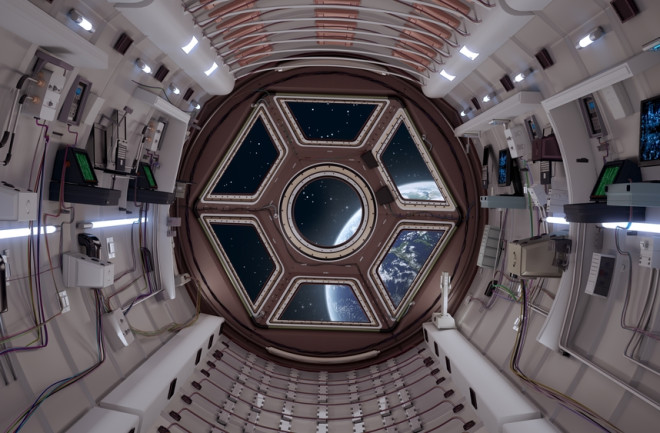Assuming human beings don’t wipe themselves out in the coming decades, and technology continues to develop at current rates, our species just might eventually expand into other parts of the solar system.
After all, NASA has plans to build a permanent moon base, and steps are being taken to send crewed spacecrafts to Mars. Should we get there, humans must grapple with various potential methods of survival as a space-faring civilization.
Two general schools of thought have emerged, each with a vastly different approach: Some futurists say terraforming large planetary bodies will be the best bet — to more closely resemble Earth-like conditions — while others say building large space habitats is more realistic.
The Origins of Space Habitats
While they might seem like pure science fiction, space habitats have been treated as a serious subject of study by academics for a long time.
Back in 1975, NASA’s Ames Research Center and Stanford University collaborated on the first annual NASA Summer Study to explore how people might one day build a space colony.
The result was the Stanford Torus, a hypothetical space habitat that could house 10,000 people.
Read More: How Big Is the Observable Universe?
The Design of Stanford Torus
The design is a doughnut-shaped rotating space station, spanning just over a mile in diameter.
Rotating once per minute, the structure could produce 0.9–1.0 g of artificial gravity through centrifugal force.
The interior of the Torus would provide the living space for the residents and would be large enough to simulate a natural ecosystem environment, where areas of greenery could facilitate agriculture.
Similar structures, such as O’Neill Cylinders, have also been suggested as potential models for future space habitats. But while these ideas are fun to conceptualize, is it realistic to think that our descendants might one day inhabit such an otherworldly environment?
Read More: These Experiments Are Building the Case to Terraform Mars
Solving Space Habitat Challenges
The answers to that are central to the work of Anastasia Prosina, founder and CEO of the space architecture startup Stellar Amenities.
Prosina has been thinking about some of the challenges humans might face while trying to construct such vast habitats, and what effects living in artificial environments might have on our physiology and our psychology.
At present, some of the major construction challenges would include sourcing and transporting materials, which would be immensely expensive and resource intensive.
Earth is our only current source for materials, and that also means we have to spend lots of energy escaping Earth’s gravity to get those materials into space.
“The plausibility of these structures for space colonization is currently a matter of scientific and engineering debate,” Prosina says. “With current technology, it’s difficult but not impossible.”
Tech advancements, such as space-based manufacturing and mining, would make these types of projects more feasible in the future, she adds.
Read More: The First 'Space Hotel' Plans to Open in 2027
Close or Far From Earth?
When it comes to habitat building vs. terraforming, each potential route has its benefits and downsides.
With space habitats, we can design them with specific needs in mind. We would have more overall control than we might when trying to alter the atmospheric chemistry of an entire planet.
Additionally, space habitats could be built close to Earth, so if people had family, or needed to visit Earth for any reason, it wouldn’t be a long trip back.
“However, the downsides are the immense initial investment, ongoing maintenance required, and the fact that we’re still uncertain about the long-term effects of living in artificial environments,” says Prosina.
Read More: Winter May Seem Cold, But It's Nothing Compared To Outer Space
Human Body Limitations
Aside from the obvious practical limitations, there are human factors that will ultimately determine whether long-term habitation of such structures is feasible.
People have spent consecutive months on the international space station, and ongoing research is probing the effects that space can have on the human body.
One obvious force, or lack thereof, is gravity. The human body is conditioned to function with the Earth’s gravitational field, and muscular atrophy can emerge when our muscles aren’t constantly fighting to keep us upright on Earth.
However, there are a number of other factors that influence our health and would be drastically altered by living in space.
Read More: Back Pain is Highly Common Among Astronauts
The Mind in Space
“Light cycles, noise control, privacy and community spaces must be considered to support mental health,” Prosina says. “Furthermore, we must design for a sense of connection to nature and the Earth, which could be achieved with biomimicry and virtual reality technologies.”
The more we can learn about how the human body and mind respond to the challenges of living in space and other extreme or artificial environments, the better equipped we will be to meet the challenges that living in space habitats might bring.
This, together with a reduction in the costs of construction, will be key to making space habitats a real possibility in the future.
Read More: Why Haven’t Humans Reached Mars?

